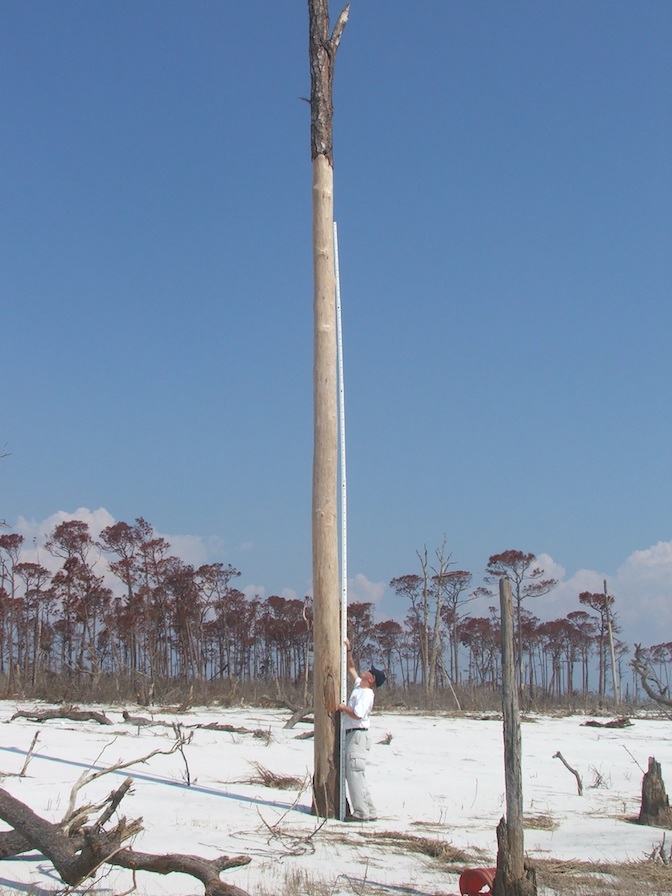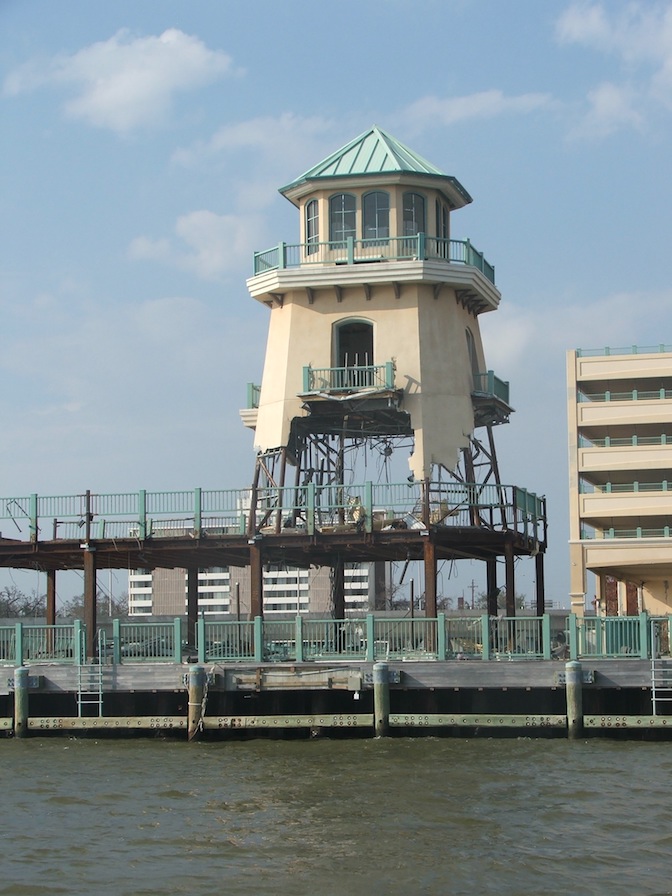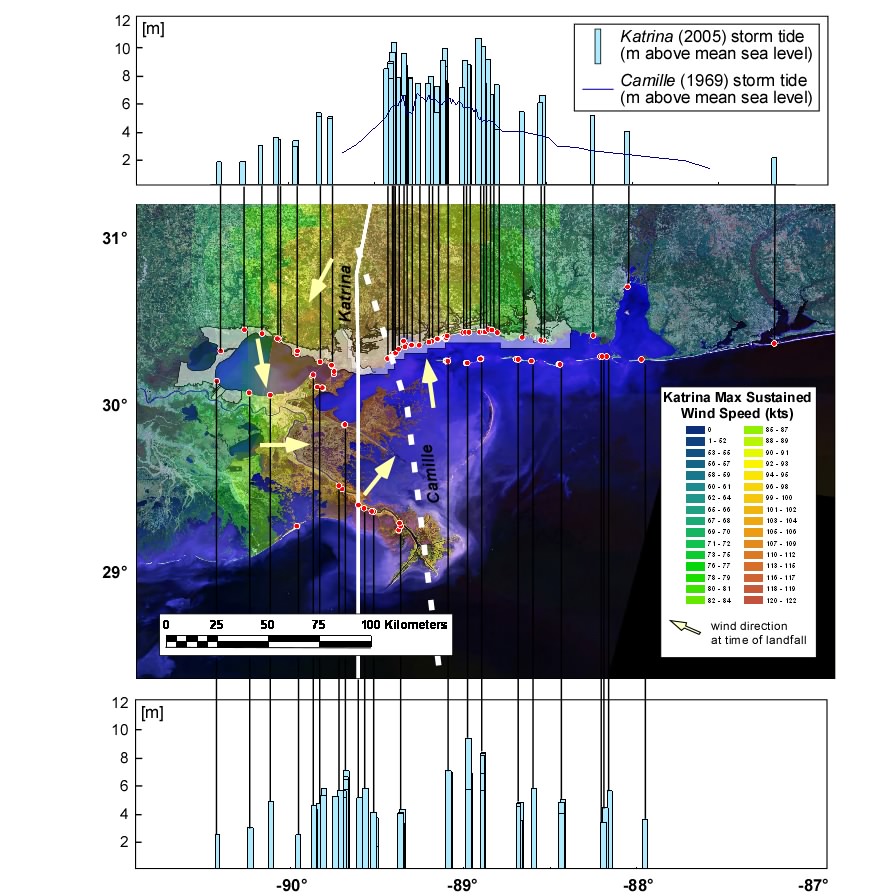


Hurricane Katrina (23-30 August 2005) was the costliest ($108 billion 2005 USD) and one of the deadliest hurricanes to ever strike the United States of America with more than 1800 fatalities. Katrina struck low-lying coastlines particularly vulnerable to storm surge flooding. The widespread failure of tide gauges along the Mississippi and Louisiana shores required survey teams to collect high water marks to document the surge height. 2005 Hurricane Katrina’s storm tide exceeded the corresponding envelope of 1969 Hurricane Camille at all locations. The storm tide peaked to the East of Katrina’s path and was consistently measured between 7 and 10 meters along a 60 km stretch of Mississippi coastline. The high water marks along the intact levee system in New Orleans’s Lakeshore adjacent to the 17th Street Canal did not exceed 5 meters indicating that the 17th Street Canal levee failed prior to overtopping (Fritz et al. 2007, 2008). This presentation encompasses field surveys after cyclonic events around the world such as 2007 Cyclone Gonu in the Arabian Sea (Fritz et al., 2010), 2008 Cyclone Nargis in Myanmar (Fritz et al., 2009), the 2013 Typhoon Haiyan (Yolanda) in the Philippines (Soria et al., 2016), 2015 Cyclone Pam in Vanuatu and Hurricane Joaquin in the North Atlantic.



Fig. 1. (a) Overland flow depth measurements at bark off tree on East Ship Island (MS, USA); (b) wash-out damage on the steel frame structure of the lighthouse at Beau Rivage Casino in Biloxi (MS, USA); (c) Storm tides of Hurricanes Camille (1969) and Katrina (2005) along the US Gulf of Mexico Coast. All Hurricane Katrina field survey photos are available at http://www.katrina.gatech.edu/galleries.html